1. Body size: there is a lot of difference in body size of males and females. The size of body of males is larger in comparison to females.
2. Body shape: In males ‘V’ Shaped body is considered the best whereas in femalesslim constitution of body is considered the best.
3.Centre of gravity: The height of female is usually found is less in comparison tomales. The centre of gravity of females is less high and the height of centre of gravity of males if high.
This is the reason why the stability in females is more than males.
4.Abdomen: females have larger abdominal cavity than males. This is due to the factthat females have additional organs of reproduction.
5.Bones of shoulders: The shoulder bones of females are found to be weak incomparion to shoulder bones of males. Due to this reason, females are provided low weight equipments in throwing events.
6.Vertebrae, legs and knees: The vertebrae in females is long in comparison to handsand legs whereas in males the vertebra is small in comparison to hands and legs .
The physiological difference in females and males are follows:
1.Muscular strength: The muscular strength of females is less than males. The contraction and extension of muscles of females is less forceful whereas males have more forceful contraction and extension of muscles.
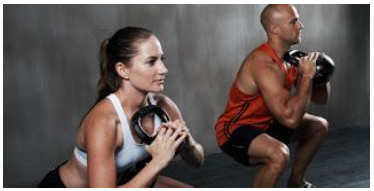
2.Blood circulation: The size of heart in females is smaller in comparison tomales.and also there is less amount of blood in females than males. Generally the heart rate of females remain more than males.
3.Respiratory organs: Lungs of females are smaller in comparison to males. That’swhy, females have less endurance than males. In fact, lung capacity of normal healthyfemale is 10% less in comparison to male of similar shape and size.
4.Menstrual cycle: Females should not perform strenuous and vigorous works during menstrual cycle whereas in males there is no such type of cycle.
7.2 Physiological factor determining component of Physical Fitness
Physiological factors for determining strength.
The following are the factors for determining strength:
1. Muscle composition: There are two types of fibres in muscles i.e. fast twitch fibres andslow twitch fibres. The muscles which consist of more percentage of fast twitch fibres will produce more strength.
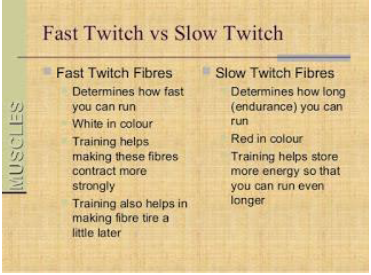
'
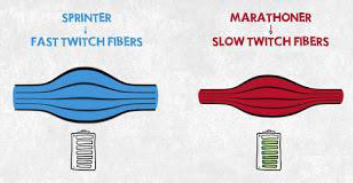
2.Size of the muscle: The strength of an individual depends on the size of muscle. As larger and bigger muscle produce more force and with the help of different methods of strength training , the size of the muscle can be increased.
3.Body weight: there is a positive relation between body weight and strength. The individuals who are heavier are stronger than the individuals who are lighter in weight.
Physiological factors for determining speed.
The following are the factors for determining speed:
1.Muscle composition: The muscles which consist of more percentage of fast twitch fibres contract with more speed and produce a greater speed. Different muscles of the body have different percentage of fast twitch fibers.
2.Explosive strength: It depends on the shape, size and coordination of muscles. For very quick and explosive movement, explosive strength is required. The related proportion of fast twitch fibres and slow twitch fibres determines the maximum possible speed with which the muscle can contract.
3.Flexibility: It also determines the speed. Good flexibility allows maximum range of movements and also enables complete utilization of explosive strength.
4.Biochemical reserves and metabolic power: muscles requires more amount ofenergy and high rate of consumption for maximum speed performance. For this purpose the stores of ATP & CP in the muscles should be enough. If the store is less, the working process of the muscles slows down after short time.
Physiological factors for determining flexibility.
The physiological factors for determining flexibility are:
1.Muscle strength: Flexibility depends on the level of strength. Weak muscles can become a limiting factor for achieving higher range of movement. Muscle strength is highly trainable therefore, it can enhance flexibility.
2.Joint structure: There are several different types of joints in human body. Some of the joints intrinsically have a greater range of motion. eg. the ball and socket joint of the shoulder has the greatest range of motion.
3.Age and gender: flexibility decreases with the advancement of age. It can been hanced with the help of training. Gender also determines the flexibility as females tends to be more flexible than males.
4.Internal environment:The internal environment of an athlete influences the flexibility. If internal temperature increases flexibility increases; if decreases flexibility decreases.
5.Previous injury: Injuries to connective tissues and muscles ultimately lead toreduced flexibility
Physiological factors determining endurance.
1.Aerobic capacity:-
Aerobic capacity is the a measure of the ability of the heart and lungs to get oxygen tothe muscles. An example of aerobic capacity is body's ability to take in and useoxygen to improve aerobic performance.
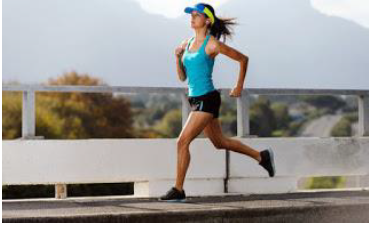
2.Oxygen Uptake:- It is highest rate at which oxygen can be taken up and consumed by the heart per minute.
3.Cardiac Output:- The cardiac output is simply the amount of blood pumped by the heart per minute.
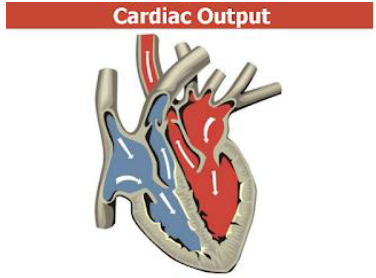
Effect of exercise on the cardiovascular system
*(i) Cardiac output is the amount of blood pumped by the heart in 1 min. This increases directly with increasing exercise intensity.
*(ìì) The heart rate increases from a resting rate of 72 beats / min to 150 beats / min or even more.
(ííi) The stroke volume, meaning the amount of blood pumped into the Aorta with every heartbeat,increases from a resting volume of 70-90 mL to 100-120 mL per beat.
(ìv) Exercise increases the plasma volume of blood by 12 Op :, but total blood volume may reduce slightly.
(v) Blood flow is redistributed with more blood going to the muscles, heart and skin,while blood in the kidneys and abdomen is reduced.
*(vì) Blood pressure increases due to exercise because there is more blood flowing in the blood vessels.
Effects of exercise on muscular system.
*1. Size and shape of muscle changes: Regular exercise changes the shape and size of the muscle. Cells of the muscles are enlarged which change the shape and size of the muscle.
*2. Correct body posture; regular exercise keeps the correct posture of the body by strengthening the muscles. The postural deformities do not occur. If there is any physical deformity, then it is removed.
*3. Food storage increases: the capacity of food storage in body can be enhanced by doing regular exercises. This stored food can be utilized immediately when required.
4.Toned muscles: regular exercise helps in keeping the muscles in toned position.
Muscles become firm and maintain a slight, a steady pull on the attachments.
*5. Efficient movement of muscles: The movement of muscles becomes efficient and smooth. The movements during different activities become attractive.
6.Change in connective tissues: the connective tissues become powerful. These tissues can bear the stress of strenuous activity.
Effects of exercise on respiratory system.
1. Increase in Tidal air capacity: by doing regular exercise it has been noted that thereis an increase in the amount of tidal air capacity of an individual.
*2. Decrease in rate of respiration: When a beginner starts exercising his rate of respiration increases. But when the same individual perform exercise daily, his rate of respiration decreases in comparison to the beginner at rest.
*3. Strong will power: regular exercise increases the will power of an individual. As pranayama, the specific exercise for lungs increases the will power of the doer.
*4. Unused alveolus becomes active : Regular exercise activates the unused alveolus because much amount of oxygen is required in vigorous activities of daily routine.
The passive alveolus become active.
5. Increase in vital air capacity: The capacity of vital air capacity varies from 3500cc to 4500cc in a normal adult. Due to regular exercise its capacity increases upto 5500cc.
Ageing is the process of becoming older. It represents the accumulation of changes in a person over time. Ageing in humans refers to a multidimensional process of physical, psychological, and social change.
Role of regular exercise on ageing process
-Reduce the loss of muscle mass
-Helps in maintaining bone density
-Reduce risk of cardio-vascular diseases
-Improve flexibility & strength-Enhance the lung capacity
-Slowdown the brain ageing
-Improve the mental & social health-Reduce the risk of age-linked diseases

